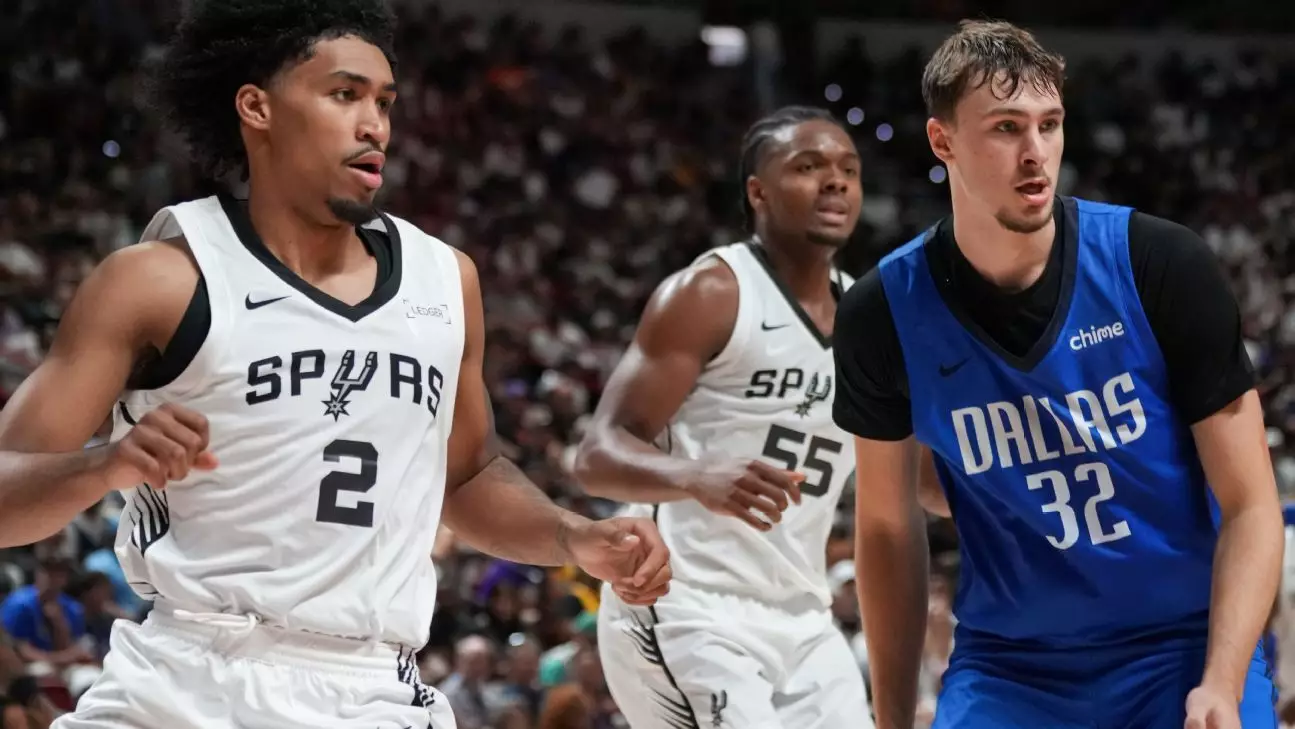The NBA’s summer league provided a captivating preview of what the league’s future might hold, especially through the highly anticipated clash between the league’s top two draft prospects. The game wasn’t just a routine exhibition; it was a statement—a declaration that a new generation of basketball superstars is on its way to reshape the league’s landscape. The spotlight was firmly on Cooper Flagg and Dylan Harper, two athletes whose performances transcended their age and experience, hinting at the remarkable impact they could have in the seasons to come.
Their appearance was more than just a display of talent; it was an affirmation of the league’s ongoing evolution. Flagg’s dominance, with 31 points, six rebounds, and impressive court awareness, showcased an individual with the maturity often reserved for seasoned NBA veterans. Harper’s energetic debut, scoring 16 points, pulled spectators into a narrative of resilience and readiness after overcoming injury setbacks. Their performances underscored a fundamental truth: the future is not only bright but fiercely competitive, brimming with talent eager to leave a lasting imprint.
What makes their emergence particularly compelling is how both players elevated a summer league game into an electrifying event. It was no longer about simple exhibition basketball but about signaling the arrival of promising careers. The crowd’s immense enthusiasm, combined with the high level of play, magnified the significance of each moment. These young athletes aren’t just vying to be drafted; they are vying to redefine the standards of excellence and skill in the NBA.
Superstar Potential and Psychological Impact
Their showings also illuminated the psychological resilience required to succeed at the highest levels. Flagg, despite some early struggles, demonstrated a shot selection that balanced patience and assertiveness—an essential trait for future NBA stars. His ability to draw fouls and produce key plays under pressure hints at a leadership potential that transcends mere talent. Meanwhile, Harper exhibited remarkable confidence and athleticism, with a crucial block that brought the arena to its feet, an indicator of his competitive fire and readiness to handle high stakes.
The game gave a glimpse of how these players might develop into franchise cornerstones. Flagg’s versatility as a scorer and defender suggests a player who could embody a modern, multifaceted big man. Harper, with his explosive athleticism and scoring instinct, presents the archetype of a guard capable of changing games on a dime. Their performances aren’t just flashes of brilliance; they are foundations upon which future NBA dynasties could be built.
Furthermore, the game’s context—a packed arena filled with current and former NBA stars, celebrities, and enthusiastic fans—demonstrates the league’s shift towards marketing and cultivating vibrant new superheroes. These players aren’t just athletic performers; they are becoming integral parts of a larger sports entertainment ecosystem. Their confidence, poise, and ability to handle the spotlight will be critical in shaping their career trajectories and influencing aspiring athletes worldwide.
The Road Ahead: Expectations vs. Reality
While the summer league offered an optimistic glance at the potential of Flagg and Harper, a dose of realism is necessary. The transition from summer league heroics to NBA stardom is widely acknowledged as a road filled with challenges. Euphoria around young talents can often eclipse the reality of the game’s grit and complexity at the professional level. It’s easy to get carried away by highlight reels and stat lines, but sustained success demands more: adaptability, mental toughness, and perseverance.
Flagg himself admitted that adjusting to new environments requires strategy and patience. His comments about getting comfortable and learning to maximize his aggressiveness point to an essential truth: growth is a process. Harper, while galvanizing in his debut, is also entering a league where every game demands strategic evolution. Their initial performances do not guarantee immediate stardom, but they do establish a promising blueprint for future development.
The NBA’s future hinges on the ability of these young athletes to sustain and accelerate their upward trajectories amidst growing expectations. They will face fierce competition, media scrutiny, and the physical toll of professional basketball. Nevertheless, their early displays of skill and mental acuity suggest they possess the resilience needed to navigate these challenges. It’s crystal clear that the league is on the cusp of an exciting new chapter, driven by talents who are just beginning to unlock their full potential.
The Significance of Fresh Competition in a Changing League
What makes this matchup even more captivating is the burgeoning rivalry it hints at—a rivalry born from their contrasting yet complementary skill sets. Flagg’s poised, deliberate approach and Harper’s unrelenting athleticism could ignite a competitive fire that fuels their growth and fans’ engagement for years. When future matchups unfold, they will not just be battles of skill but of psychology, tactical evolution, and character.
This new wave of talent also challenges current stars, compelling them to elevate their game. The league’s landscape becomes more dynamic, driven by the enthusiasm and aspirations of these young players eager to carve out their own legends. Their performances in the summer league serve as a wakeup call to established veterans: the next era is already on the horizon, and it promises surpassing expectations.
In essence, Flagg and Harper symbolize more than just individual promise; they represent a fundamental shift in what it means to develop and succeed in professional basketball. Their early exploits are not just fleeting highlights—they are the opening chapters of an exciting story that could redefine the NBA’s identity for years to come. This is where the sport’s evolution is happening, powered by raw talent, unyielding passion, and an unshakeable belief that the best is yet to come.


Leave a Reply